What do the numbers mean on the sidewall of your tire? At first glance, you look at your tire sidewall and think, “’Do I need a super secret decoder ring to read this?” In addition to the model name of the tire there is a series of numbers that at first, you don’t deem important. However, these numbers are extremely helpful, especially when it’s time to replace your tires. Here’s a quick breakdown to help you decipher one of the best kept secrets in the automotive world: How do you read tire sizes?
TIRE SIZE
Example: P225/50/R17 98H
P identifies your tire as a Passenger Tire. The P stands for PMetric. If your tire size starts with LT rather than a P than it identifies the tire as a Light Truck tire.
225 identifies the tire section width, which is the measurement of the tire from sidewall to sidewall in millimeters. This measurement varies depending on the rim to which it is fitted.
(There are 25.4 millimeters per 1 inch.)
50 is the two-figure aspect ratio. This percentage compares the tire's section height with the tire's section width. For example, this aspect ratio of 50 means that the tire's section height is 50% of the tire's section width.
R indicates the construction used within the tires casing. R stands for radial construction. B means belted bias and D stands for diagonal bias construction.
17 The last dimension listed in the size is the diameter of the wheel rim, which is most often measured in inches.
LOAD INDEX AND SPEED RATING
Example: P225/50/R17 98H
The load index and speed rating, or service description, are the numbers that follow the tire size.
The load index tells you how much weight the tire can support when properly inflated. Load indices range from 75 - 105 for passenger tires, with each numeric value corresponding to a certain carrying capacity.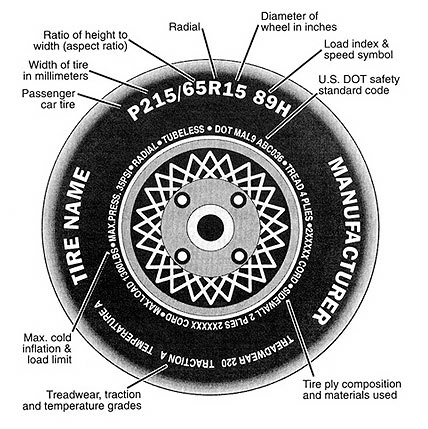 The carrying capacity for each value can be found on a load index chart. On each U.S. passenger car tire, the load limit is listed in pounds. European tires have the load limit listed in kilograms and sometimes pounds.
The carrying capacity for each value can be found on a load index chart. On each U.S. passenger car tire, the load limit is listed in pounds. European tires have the load limit listed in kilograms and sometimes pounds.
H Speed ratings are represented by letters ranging from A to Z. Each letter coincides to the maximum speed a tire can sustain under its recommended load capacity. For instance, S is equivalent to a maximum speed of 112 mph. Even though a tire can perform at this speed, Continental Tire does not advocate exceeding legal speed limits.
Rating | Maximum Speed |
Q | 100 MPH |
S | 112 MPH |
T | 118 MPH |
U | 124 MPH |
H | 130 MPH |
V | 149 MPH |
W | 168 MPH |
Y | 186 MPH |
Z | Over 149 MPH |
DOT Serial Number
The "DOT" symbol certifies the tire manufacturer's compliance with the U. S. Department of Transportation (DOT) tire safety standards. Tires made in the United States have the DOT serial number located on the inside sidewall near the rim.
S. Department of Transportation (DOT) tire safety standards. Tires made in the United States have the DOT serial number located on the inside sidewall near the rim.
Below is a description of the serial number. Starting with the year 2000, four numbers are used for the Date of Manufacture, the first two numbers identify the week and the last two numbers identify the year of manufacture. This identifies how old a tire is.
Prior to year 2000 three numbers are used for the date of manufacture, first two numbers identify the week and the last number identifies the year of manufacture. To identify tires manufactured in the 90s, a decade symbol (a triangle on its side) is located at the end of the DOT serial number.
At first glance, you look at the sidewall of your tire and think, “’Do I need a super secret decoder ring to read this?” In addition to the model name of the tire there is a series of numbers that at first, you don’t deem important.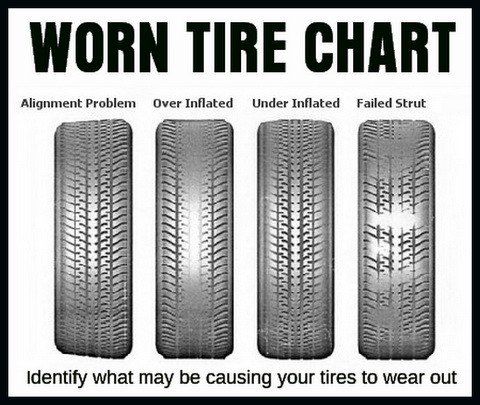 However, these numbers are extremely helpful, especially when it’s time to replace your tires. Here’s a quick breakdown to help you decipher one of the best kept secrets in the automotive world.
However, these numbers are extremely helpful, especially when it’s time to replace your tires. Here’s a quick breakdown to help you decipher one of the best kept secrets in the automotive world.
TIRE SIZE
Example: P225/60/R16 94V
P identifies your tire as a Passenger Tire. The P stands for PMetric. If your tire size starts with LT rather than a P then it identifies the tire as a Light Truck tire.
225 identifies the tire section width, which is the measurement of the tire from sidewall to sidewall in millimeters. This measurement varies depending on the rim to which it is fitted.
(There are 25.4 millimeters per 1 inch.)
60 is the two-figure aspect ratio. This percentage compares the tire's section height with the tire's section width. For example, this aspect ratio of 60 means that the tire's section height is 60% of the tire's section width.
R indicates the construction used within the tires casing. R stands for radial construction. B means belted bias and D stands for diagonal bias construction.
R stands for radial construction. B means belted bias and D stands for diagonal bias construction.
16 The last dimension listed in the size is the diameter of the wheel rim, which is most often measured in inches.
If a tire size reads, LT235/75R15 104/101S, the LT indicates that this tire is meant for Light Truck use. These tires are made for light-duty and heavy-duty pickup trucks (typically ½ ton, ¾ ton, or 1-ton load capacity), SUVs and vans. These tires fall into one of three categories:
Numeric– designed to carry heavy cargo loads and/or tow trailers.
Wide Base – designed to carry heavy cargo loads and/or tow trailers on a wheel rim with a diameter of 16.5 inches.
Flotation – wider, oversized tires designed to carry heavy cargo loads and/or tow trailers on loose surfaces such as sand, gravel, or dirt.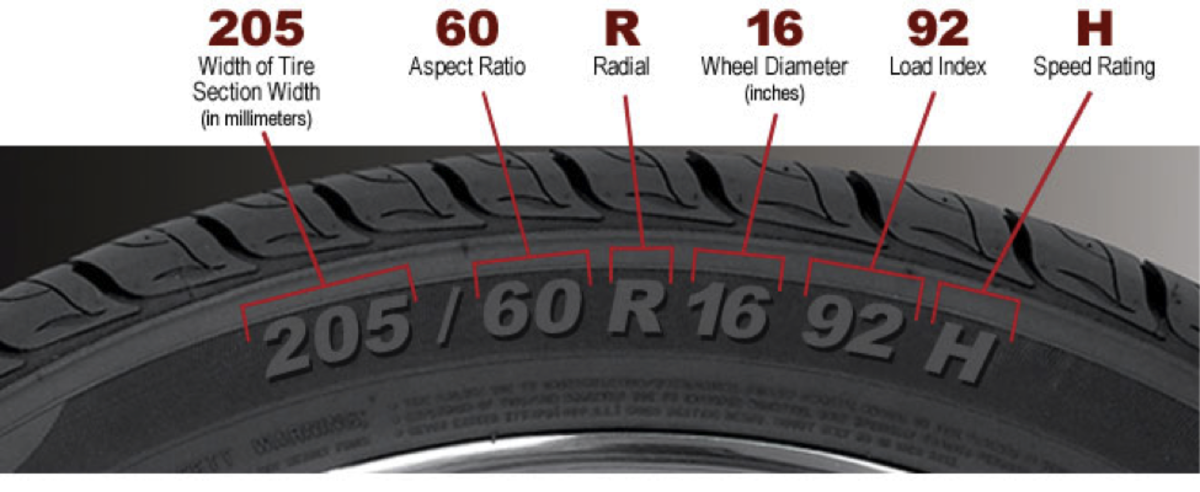
Tires beginning with a ST (for example ST175/80R13) indicate a Special Trailer tire and should only be used on car, boat or utility trailers.
LOAD INDEX AND SPEED RATING
Example: P225/60/R16 94V
The load index and speed rating, or service description, are the numbers that follow the tire size. In the example above, the first two digits (94) represent the tire’s load index and the single letter (V) identifies the tire’s speed rating. But what does that mean?
94 - The load index tells you how much weight the tire can support when properly inflated. Load indexes typically range from 70 - 126, with each numeric value corresponding to a certain carrying capacity. The higher toe tire’s load index number, the greater its load carrying capacity. The carrying capacity for each value can be found on a load index chart. On each U.S. passenger car tire, the load limit is listed in pounds. European tires have the load limit listed in kilograms and sometimes pounds.
When it comes to Light Truck (LT) or Special Trailer (ST) tires, there are two load indexes branded (example - LT235/75R15 104/101S). In this example, the 104 corresponds to 1,984 pounds (see chart below), and the 101 corresponds to 1,819 pounds. So which number do you use? The answer is, it depends on the how the tire is being used…and it can change.
LT tires are commonly used on trucks with dual rear wheels and are branded with two load indexes. The first number indicates load carrying capacity if the tire is installed on a truck with a single-wheel rear axle, and the second number applies when the tire is used in a dual rear application.
V - Speed ratings are represented by letters ranging from A to Z. Each letter coincides to the maximum speed a tire can sustain under its recommended load capacity. For instance, V is equivalent to a maximum speed of 149 mph. Even though a tire can perform at this speed General Tire does not advocate exceeding legal speed limits.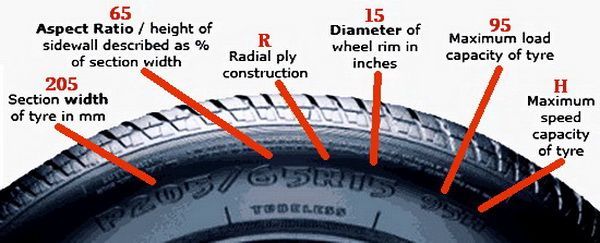 It is also important to note that speed ratings only apply to tires that have not been under-inflated, overloaded, damaged, or altered.
It is also important to note that speed ratings only apply to tires that have not been under-inflated, overloaded, damaged, or altered.
Rating Maximum Speed Use
L 75 MPH Off-Road & Light Truck tires
M 81 MPH Temporary Spare tires
N 87 MPH
P 93 MPH
Q 99 MPH Winter tires (w/or w/out studs)
R 106 MPH H.D. Light Truck tires
S 112 MPH Family Sedans & Vans
T 118 MPH Family Sedans & Vans
U 124 MPH
H 130 MPH Sport Sedans & Coupes
V 149 MPH Sports Cars, Sport Sedans & Coupes
Z Over 149 MPH Sports Cars
Do you want to choose a tire for your car, but do not understand tire markings well? It's not a problem! In this section, we will help you figure out what tire parameters are, what they mean, and which tire is right for your car.
Select tires / tire catalog

195/65 R15 91 T XL
195 is the tire width in mm.
65 - Proportionality, i.e. profile height to width ratio. In our case, it is equal to 65%. Simply put, with the same width, the larger this indicator, the higher the tire will be and vice versa. Usually this value is simply called “profile”.
Since the tire profile is a relative value, it is important to take into account when choosing rubber that if you want to put tires with a size of 205/65 R15 instead of the size 195/65 R15, then not only the width of the tire will increase, but also the height! Which in most cases is unacceptable! (except when both of these sizes are indicated in the car's operating book). You can calculate the exact data on changing the outer dimensions of the wheel in a special tire calculator.
If this ratio is not specified (for example, 185/R14C), then it is equal to 80-82% and the tire is called full profile. Reinforced tires with this marking are usually used on minibuses and light trucks, where a large maximum wheel load is very important.
Reinforced tires with this marking are usually used on minibuses and light trucks, where a large maximum wheel load is very important.
R - means a tire with a radial cord (in fact, almost all tires are made this way now).
Many mistakenly believe that R- means the radius of the tire, but this is the radial design of the tire. There is also a diagonal design (indicated by the letter D), but recently it has practically not been produced, since its performance is noticeably worse.
15 - wheel (rim) diameter in inches. (It is the diameter, not the radius! This is also a common mistake). This is the “landing” diameter of the tire on the disk, i.e. is the inside size of the tire or the outside of the rim.
91 - load index. This is the level of maximum permissible load on one wheel. For passenger cars, it is usually done with a margin and is not a decisive factor when choosing tires (in our case, IN - 91 - 670 kg. ). For minibuses and small trucks, this parameter is very important and must be observed.
). For minibuses and small trucks, this parameter is very important and must be observed.
T is the tire speed index. The larger it is, the faster you can ride on this tire (in our case, IS - H - up to 210 km / h). Speaking about the tire speed index, I would like to note that with this parameter, the tire manufacturer guarantees the normal operation of the rubber when the car is constantly moving at the specified speed for several hours.
There are two different American tire markings. The first one is very similar to the European one, only the letters “P” (Passanger - for a passenger car) or “LT” (Light Truck - light truck) are placed before the size. For example: P 195/60 R 14 or LT 235/75 R15. And another tire marking, which is fundamentally different from the European one.
Example: 31x10.5 R15 (corresponds to European size 265/75 R15)
31 is the outside diameter of the tire in inches.
10.5 is tire width in inches.
R - a tire with a radial design (older tire models were with a diagonal design).
15 is the inner diameter of the tire in inches.
Generally speaking, except for inches that are unusual for us, the American tire marking is logical and more understandable, unlike the European one, where the height of the tire profile is not constant and depends on the width of the tire. And here everything is simple with decoding: the first digit of the standard size is the outer diameter, the second is the width, the third is the inner diameter.
XL or Extra Load is a reinforced tire, the load index of which is 3 units higher than that of conventional tires of the same size. In other words, if a given tire has a load index of 91 marked XL or Extra Load, then this means that with this index, the tire is able to withstand a maximum load of 670 kg instead of 615 kg (see the table of tire load indices).
M+S or tire marking M&S (Mud + Snow) - mud plus snow and means that the tires are all-season or winter. Many summer tires for SUVs are labeled M&S. However, these tires must not be used in winter, as winter tires have a completely different rubber compound and tread pattern, and the M&S badge indicates good flotation performance.
All Season or AS all season tires. Aw (Any Weather) - Any weather.
Pictogram * (snowflake) — rubber is designed for use in harsh winter conditions. If this marking is not on the sidewall of the tire, then this tire is intended for use only in summer conditions.
Aquatred, Aquacontact, Rain, Water, Aqua or icon (umbrella) Special rain tires.
Outside and Inside ; asymmetric tires, i.e. It is important not to confuse which side is the outside and which is the inside. When installing, the Outside inscription must be on the outside of the car, and Inside on the inside.
RSC (RunFlat System Component) - RunFlat tires are tires on which you can continue to drive a car at a speed of no more than 80 km / h with a FULL tire pressure drop (due to a puncture or cut). On these tires, depending on the manufacturer's recommendations, you can drive from 50 to 150 km. Different tire manufacturers use different designations for RSC technology. For example: Bridgestone RFT, Continental SSR, Goodyear RunOnFlat, Nokian Run Flat, Michelin ZP etc.
Rotation or arrow This marking on the tire sidewall indicates a directional tire. When installing the tire, you must strictly observe the direction of rotation of the wheel, indicated by the arrow.
Tubeless - tubeless tire. In the absence of this inscription, the tire can only be used with a camera. Tube Type - indicates that this tire must be used only with a tube.
Max Pressure ; maximum allowable tire pressure. Max Load - the maximum allowable load on each wheel of the car, in kg.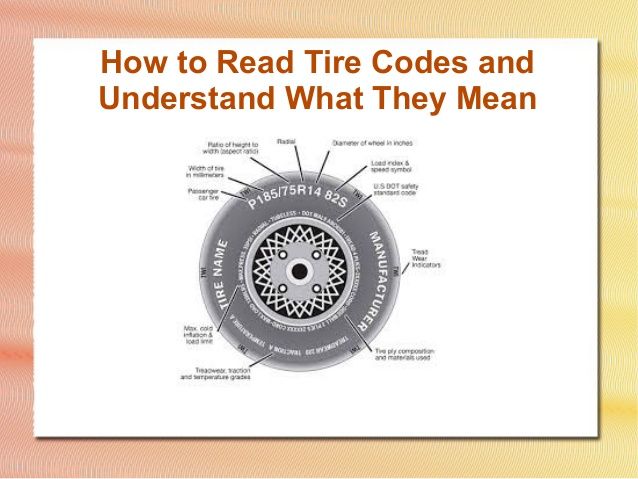
Reinforced or the letters RF in the size (for example 195/70 R15RF) means that this is a reinforced tire (6 layers). The letter C at the end of the size (for example 195/70 R15C) indicates a truck tire (8 layers).
Radial this marking on the rubber in the standard size means that it is a radial construction tire. Steel means that there is a metal cord in the tire structure.
Letter E (in a circle) - the tire meets the European requirements of ECE (Economic Commission for Europe). DOT (Department of Transportation - US Department of Transportation) is an American quality standard.
Temperature A, B, or C The temperature resistance of the tire at high speeds on the test bench (A is best).
Traction A, B, or C
Treadwear ; relative expected mileage compared to a specific US standard test.
TWI (Tread Wear Indiration) - tire tread wear indicators. The marking on the TWI wheel can also be with an arrow. Pointers are located evenly in eight or six places around the entire circumference of the tire and show the minimum allowable tread depth. The wear indicator is made in the form of a protrusion with a height of 1.6 mm (the minimum tread value for light vehicles) and is located in the tread recess (usually in the drainage grooves).
The marking on the TWI wheel can also be with an arrow. Pointers are located evenly in eight or six places around the entire circumference of the tire and show the minimum allowable tread depth. The wear indicator is made in the form of a protrusion with a height of 1.6 mm (the minimum tread value for light vehicles) and is located in the tread recess (usually in the drainage grooves).
DOT - Manufacturer's coded address, tire size code, certificate, issue date (week/year).
Find tires / tire catalog
Author: Anton CHUIKIN
Together with:
11/04/2015
WE REVEAL THE SECRETS OF WINTER TIRES ON THE EXAMPLE OF THE MOST COMMON ERRORS AND MISTAKE.
Tips from the editor-in-chief of the car radio "Strana" Anton Chuikin:
"I need 15-radius tires.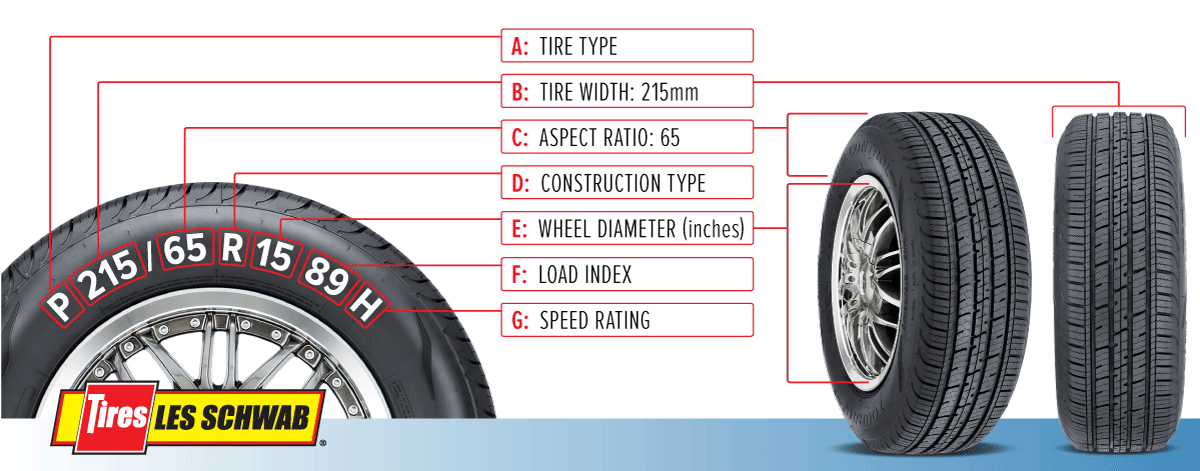 " Never buy tires of either the 15th or 13th radius, or any other! In the 205 / 70R15 code, the letter R indicates the tire design (radial), and the next number 15 is the bore diameter in inches (approximately equal to the outer diameter of the rim). Thus, the “16th radius” is, for a moment, a wheel with a table height, unless, of course, the seller meant this particular size.
" Never buy tires of either the 15th or 13th radius, or any other! In the 205 / 70R15 code, the letter R indicates the tire design (radial), and the next number 15 is the bore diameter in inches (approximately equal to the outer diameter of the rim). Thus, the “16th radius” is, for a moment, a wheel with a table height, unless, of course, the seller meant this particular size.
***
"Studs - that's the main thing on the winter road." Do not consider spikes a panacea for all winter troubles. On asphalt, cobblestones, rails (especially wet ones), at best, the spikes themselves will suffer, and at worst (and just as likely) they will increase the braking distance. And by the way, in severe frost - too! The spike is not able to crash into very cold, which means hard ice - and then non-studded tires will come forward, which work like a small clothes brush, clinging to any roughness. Spikes show a clear advantage on bare ice at minus 5–minus 10: evaluate how often you encounter such conditions.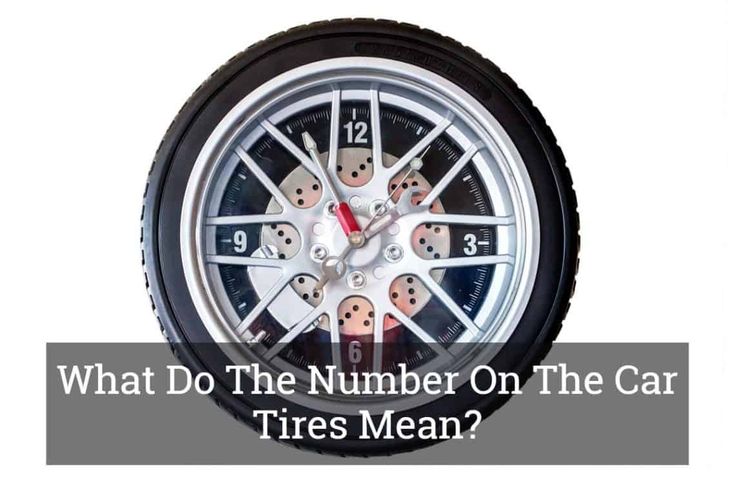
***
In no way campaigning for non-studded wheels - let everyone have their own choice here - I will only remind you that if you are going to go by car to Europe, then there are no other options. Spikes are prohibited. The exception is Scandinavia.
***
“When buying winter tires, I will not save money, I will choose from the most famous ones” - a win-win, but not always justified tactic. For example, if you buy a fresh, eighth Hakkapelita expensively under the Nokian brand, then you will get a completely reliable fourth-generation Hakka one and a half to two times cheaper - like Nordman. Michelin has a brand under its control, Tigar, Continental has Barum, and so on. It's certainly not "half-price same product" but a reasonable way to save money, especially if you don't own a Bentley, Mercedes, or Cadillac.
***
"The best tires for us are Scandinavian." Almost always, this statement is true, it is enough to recall a similar climate.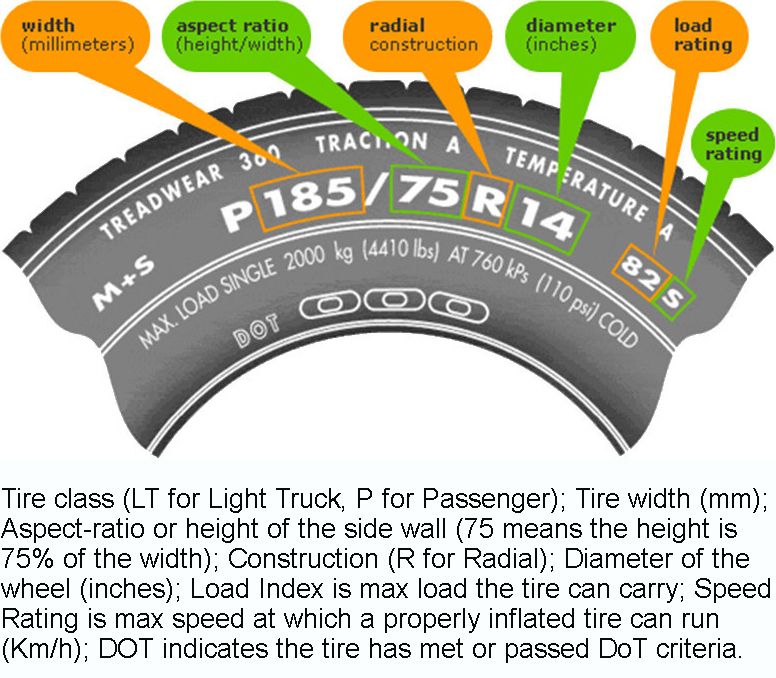 However, for tires produced in Russia (and most large companies have local production), adaptation is being carried out, and not only Finland and Sweden are similar to our country. For example, in Japan, too, snow is not uncommon, so you should not avoid Bridgestone, Yokohama, or Toyo in advance. Especially - non-studded, if you are looking for just such wheels. With caution, I would look at Chinese tires, given the test results in specialized automotive publications.
However, for tires produced in Russia (and most large companies have local production), adaptation is being carried out, and not only Finland and Sweden are similar to our country. For example, in Japan, too, snow is not uncommon, so you should not avoid Bridgestone, Yokohama, or Toyo in advance. Especially - non-studded, if you are looking for just such wheels. With caution, I would look at Chinese tires, given the test results in specialized automotive publications.
***
“In Moscow, the snow has not yet fallen, you can not rush to change tires.” In fact, the criterion for switching to winter wheels is not snowfall, but low temperatures. When the thermometer falls below 5 - and with a plus sign! - tire companies are already advising to change shoes, rightly arguing with the properties of the rubber compound. Roughly speaking, the rubber of summer tires dubs, slides on cold asphalt, so now is the time to change the wheels.
***
“You need to buy a complete set of five wheels so that the spare tire is winter.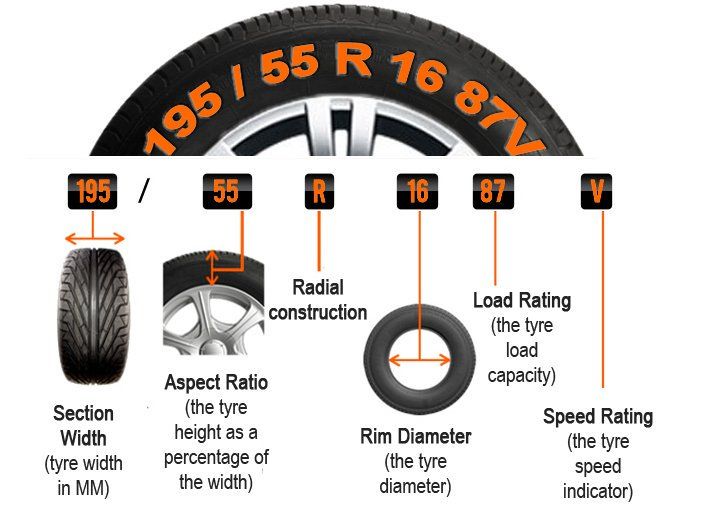 ” The pattern of many tires is directional, that is, when mounting on disks, you must immediately orient the tires: two right, two left and ... What kind of spare tire will we make? Of course, you can rearrange it later, but it's still a visit to the tire shop. Buy six wheels - and where to store the excess? Yes, and expensive. I have been taking four for a long time, and given that you don’t puncture tires often, it pays off.
” The pattern of many tires is directional, that is, when mounting on disks, you must immediately orient the tires: two right, two left and ... What kind of spare tire will we make? Of course, you can rearrange it later, but it's still a visit to the tire shop. Buy six wheels - and where to store the excess? Yes, and expensive. I have been taking four for a long time, and given that you don’t puncture tires often, it pays off.
***
“I’ll take a couple of wheels now, somehow I’ll drive off the winter, and then I’ll buy two more.” In no case! Somehow - this is both sideways, and stern forward, and skidding ... Different wheels on one car - the surest way to play the box, sorry for being rude. But even if everything ends well, next year there may not be a pair for your two wheels, the tire market is mobile, you know!
***
"Let's leave the winter tires for the summer - nothing that is noisy, but what a savings." The savings are actually dubious - on hot pavement, tires made of softer rubber wear out faster, and most importantly, they hold worse! Clattering with studs in the July heat is beyond good and evil, but non-studded tires are dangerous on a summer road: the braking distance is longer, cornering stability is worse, and wear is stronger.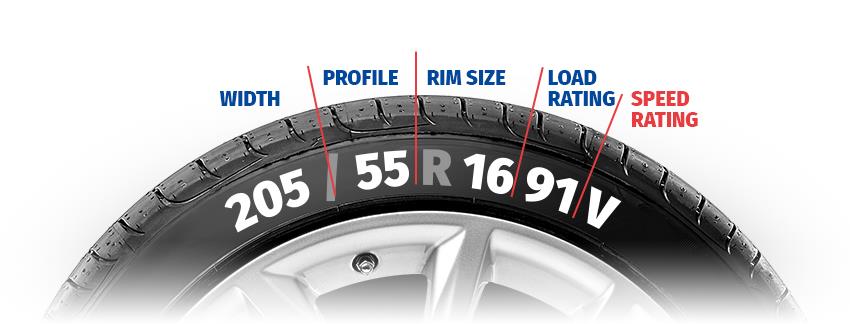 You don't go to the beach in felt boots!
You don't go to the beach in felt boots!
***
"Winter tires should be exactly the same size as summer tires." You know, there is a good reserve for saving. The larger the tire diameter, the more expensive it is. Therefore, look into the instructions for the car, see what wheels the manufacturer allows you to install - and feel free to change 16-inch rollers to 15 inches. Save a thousand or two on a tire, or even more. An exception is when you want to mount winter tires on standard wheels. Inconvenient, troublesome, but economical. However, remember that each installation shortens the life of the tire ...
***
"Tires need special storage conditions." With this argument, tire center employees sometimes try to sell you a “rubber storage service”. If you have extra money and do not have your own garage - for God's sake. But keep in mind that wintering in the country, on the balcony, in the garage will not harm the summer wheels in any way, just as it is not scary for winter ones to spend time there from April to October (the main thing is to protect them from the sun!).